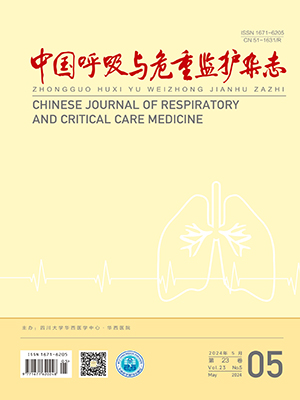Objective To analyze the etiology, risk factors, and prognosis of late-onset hospitalacquired pneumonia ( L-HAP) in respiratory ICU. Methods In this retrospective case control study, 30 L-HAP patients and 30 patients without HAP in respiratory ICU were enrolled to investigate the features and risk factors of L-HAP. Stratification was made according to the onset time of L-HAP. The etiology and pathogen distribution at each stage were described and analyzed. Results Univariate analysis revealed that
unconsciousness, aspiration, mechanical ventilation, hypoalbuminemia, and long-term use of proton pump inhibitor were significantly associated with L-HAP. Logistic regression analysis revealed that mechanical ventilation( OR = 8. 7) and hypoalbuminemia ( OR = 20. 4) were independent risk factors for L-HAP. The L-HAP patients had longer stay in hospital, long-termantibiotic use, and higher mortality compared with the patients without HAP. For the patients whose L-HAP onset time within 6-14 days, the dominated pathogens were Acinetobacter baumannii and Klebsiella pneumonia. For those within 15-28 days, the dominated pathogens were Pseudomonas aeruginosa, Acinetobacter baumanni, and Staphylococcus aureus. For those beyond 29 days, the dominated pathogens were Pseudomonas aeruginosa and Stenotrophomonas maltophilia. Conclusions Mechanical ventilation and hypoalbuminemia are independent risk factors for L-HAP. The pathogen features of L-HAP are quite different at different inhospital stage.
Citation: ZHU Linyun,QU Jieming,ZHANG Jing,HU Bijie,JIANG Hongni.. Etiology and Risk Factors of Late-Onset Hospital-Acquired Pneumonia in Respiratory Intensive Care Unit. Chinese Journal of Respiratory and Critical Care Medicine, 2010, 9(4): 386-390. doi: Copy




